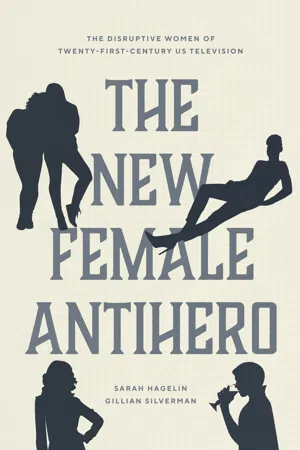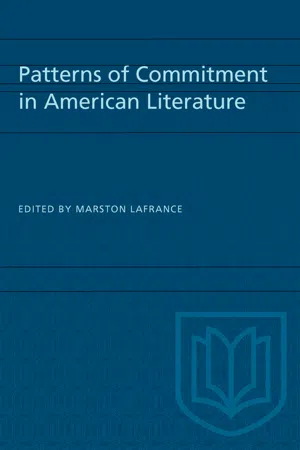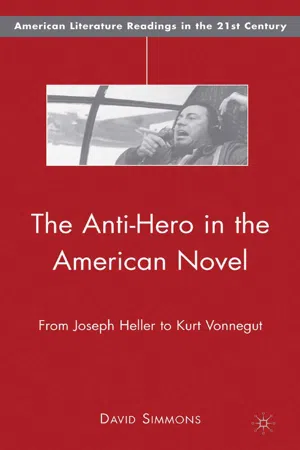Literature
Anti-Hero
An anti-hero is a protagonist who lacks traditional heroic qualities such as courage, morality, or idealism. They often display flawed or morally ambiguous characteristics, making them more relatable and complex. Anti-heroes challenge the conventional notions of heroism and can be found in various literary works, adding depth and nuance to the storytelling.
Written by Perlego with AI-assistance
Related key terms
1 of 5
3 Key excerpts on "Anti-Hero"
- eBook - ePub
The New Female Antihero
The Disruptive Women of Twenty-First-Century US Television
- Sarah Hagelin, Gillian Silverman(Authors)
- 2022(Publication Date)
- University of Chicago Press(Publisher)
INTRODUCTIONThe New Female Antihero—The What, the Why, the How
The What
What is an antihero? In recent years, television scholars have defined this figure (historically male) in terms of his moral ambiguity. Amanda Lotz, for example, describes the antihero as a “flawed protagonist.” She adds, “In many cases they are obviously ‘bad’ men by dominant social and legal, if not moral norms. Yet . . . the series depict them struggling with their responses to circumstances not entirely of their making.”1 Jason Mittell takes up a similar line of argumentation, identifying the antihero as “a character who is our primary point of ongoing narrative alignment but whose behavior and beliefs provoke ambiguous, conflicted, or negative moral allegiance.”2 Margrethe Bruun Vaage characterizes antiheroes as “morally flawed main characters” and examines audience engagement with them, asking, “How come we seem willingly to sympathize with characters in fiction we would hardly even like in real life?”3While these scholars are focused specifically on the medium of television, they occasionally nod to the long history of the antihero in film and literature, a history that helps us understand this figure with a good deal more specificity. John Fitch III, for example, defines the antihero by thinking through his contrast with the cinematic hero, conceived as “one delivering salvation, enacting positive change, and bringing relief from suffering or oppression.” The traditional hero possesses those traits usually associated with virtue and valor—“emotional, physical, and moral strength as well as charity and fortitude.”4 By contrast, the antihero lacks both nobility and purpose. He is fundamentally positioned against the social order he occupies. Lillian Furst, tracing the origins of the antihero to the figure of the Romantic hero in literature, paints an even darker picture: “The ultimate source of his malady resides in a solipsistic self-absorption.” Unlike the archetypal hero who is “essentially outward-looking . . . a leader of men . . . ready to sacrifice himself to the cause he has espoused,” the Romantic hero/antihero is fundamentally narcissistic, intent on his own triumph rather than on the salvation of the community or the good of the common weal.5 - Marston LaFrance(Author)
- 2019(Publication Date)
- University of Toronto Press(Publisher)
xii. 15Certain romantic heroes, of course, are exceptions, are positively anti-social, like Manfred. 1 8 1 take these to be norms because I find them in a wide variety of studies of the hero in literature. Not every quality appears as a norm in every study, but each appears in enough different works to warrant ac-cepting it. Some of the sources for the norms are: Aristotle, Theory of Poetry and Fine Art, ed. with notes by S. H. Butcher (New York, 1951); W. H. Auden, The Enchafed Flood; or The Romantic Icono-graphy of the Sea (New York, 1950); C. M. 8 Bowra, From Virgil to Milton (London, 1948) and Heroic Poetry (London, 1952); Kenneth Burke, A Grammar of Motives (New York, 1945); Campbell, The Hero with a Thousand Faces; Chase, Herman Melville; Henry Fielding, Tom ]ones; W. P. Ker, Epic and Romance (New York, 1957); Henry A. Myers, Tragedy: A View of Life (Ithaca, 1956); Lord Raglan, The Hero (New York, 1956); Routh, God, Man, and Epic Poetry. 17 A Grammar of Motives, p. 39. 18 The Idea of a Theater (New York, 1955), pp. 30-31. 19 A Grammar of Motives, p. 41. William H. Gilman heroes. But its validity as ·a criterion is persuasive if we merely look at such diverse stories as those of Job, of Dante and Tom Jones, of Milton's Adam and Austen's Darcy, Dickens' Pip and Eliot's Becket, Achilles and Everyman. One may also argue for its validity because of the striking way in which it corresponds to, and in some respects unites, various theories of the hero, or major parts of those theories. Joseph Campbell's folk heroes and mythological heroes, in their movement through the pattern of separation, initiation, and return, perform actions, commit themselves to a purpose, suffer, or go through, the necessary reactions which their purpose begets, and ultimately see the effects of their purpose and passion in a culmination which gives them knowl-edge instead of ignorance.- eBook - PDF
The Anti-Hero in the American Novel
From Joseph Heller to Kurt Vonnegut
- D. Simmons(Author)
- 2008(Publication Date)
- Palgrave Macmillan(Publisher)
9 This new anti-organization yet still pro-spiritual, theological sen- timent is shared by a number of 1960s novelists who begin to subject the Christ figure to a process of ideological revision in which its ‘out- dated’ religious imagery is ‘reinvigorated’ in more dissident forms. In this manner, writers engage with the central tenets of Americanism itself, exploring, challenging, and often refashioning the puritan tropes that had come to dominate American literature both explicitly and implicitly. Of course, the deployment of the Anti-Heroic as an effective means by which to subvert the ‘classical’ image of Christ has a long prece- dent in the American novel. Specific examples include Captain Ahab in Moby Dick and the titular character in Miss Lonelyhearts (1933) along with postwar characters such as Randle P. McMurphy in One Flew Over the Cuckoo’s Nest and Lloyd Jackson in Cool Hand Luke. More recently, Andy Dufresne in Stephen King’s Different Seasons (1982), the Batman of Frank Miller’s revisionist comic series The Dark Knight Returns (1997), and the character of Neo in the blockbuster Matrix 116 THE Anti-Hero IN THE AMERICAN NOVEL trilogy (1999–2003) all demonstrate a continuing fascination with the Christlike Anti-Heroic figure. Many of these characters discard the overtly mythic elements of the Christ figure while retaining much of the ideological intention behind them, reflecting the Marcusian sug- gestion that “Art must break with . . . reification.” 10 In Reason and Revolution (1941), Marcuse proposes that by breaking from the divine, art possesses the ability to create a secular model that reso- nates with a more humanitarian theory: The aesthetic morality is the opposite of Puritanism. It does not insist on a daily bath or shower for people whose cleaning practices involve systematic torture, slaughtering, poisoning; nor does it insist on clean clothes for men who are professionally engaged in dirty deals.
Index pages curate the most relevant extracts from our library of academic textbooks. They’ve been created using an in-house natural language model (NLM), each adding context and meaning to key research topics.


